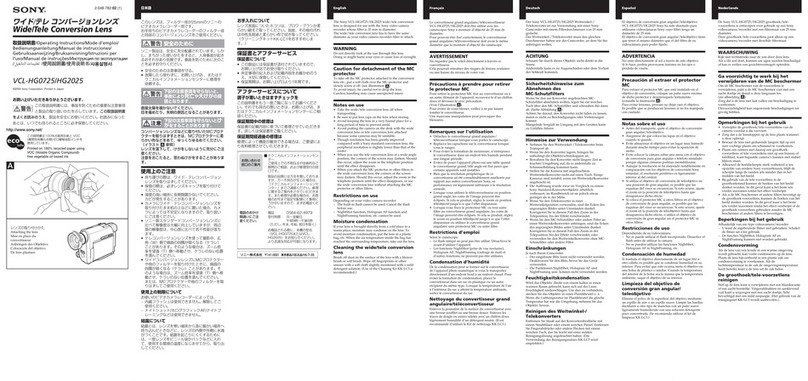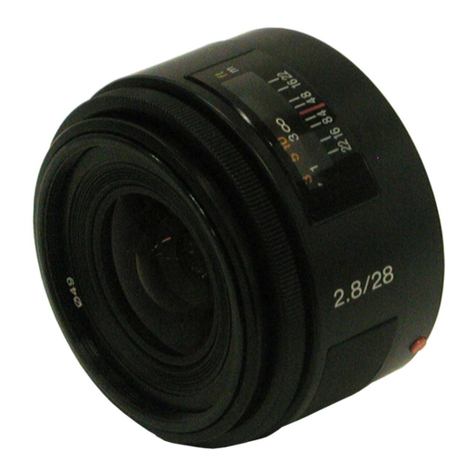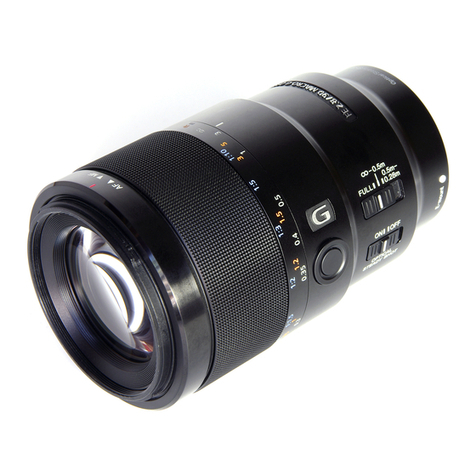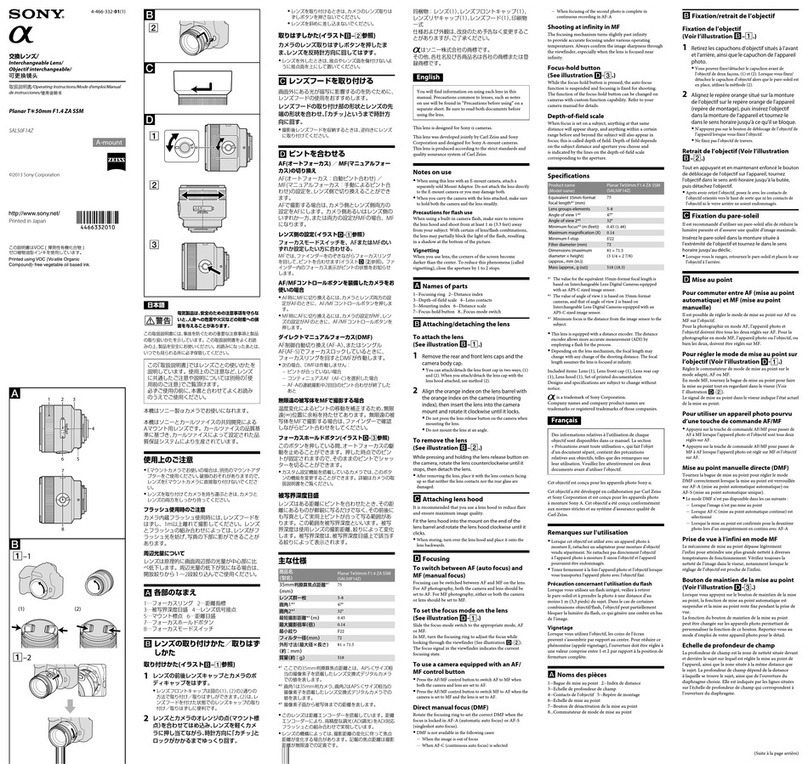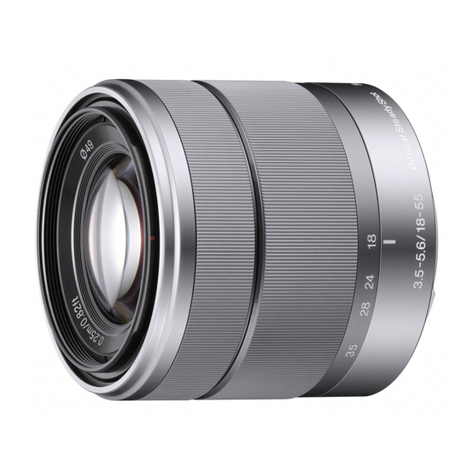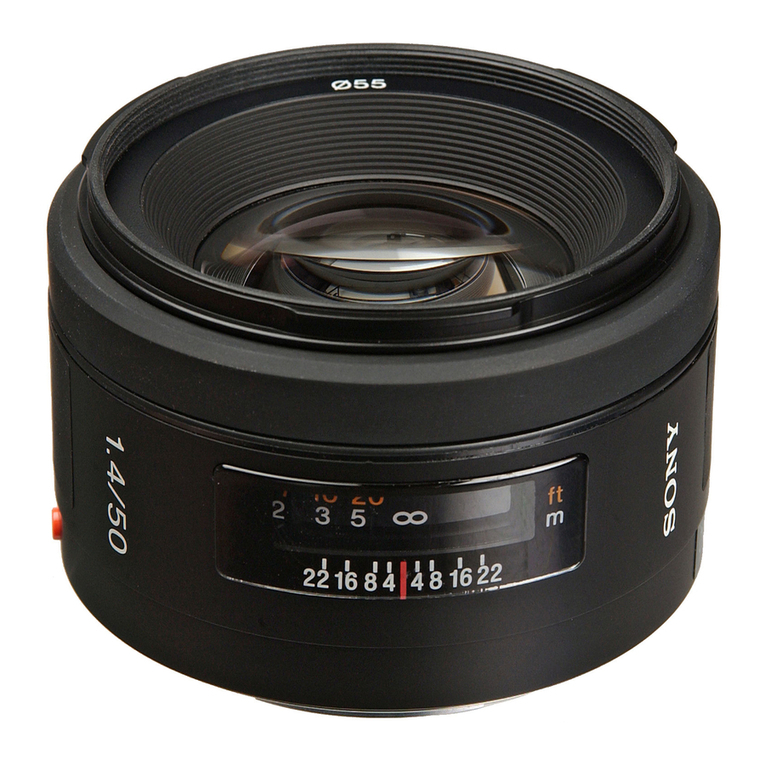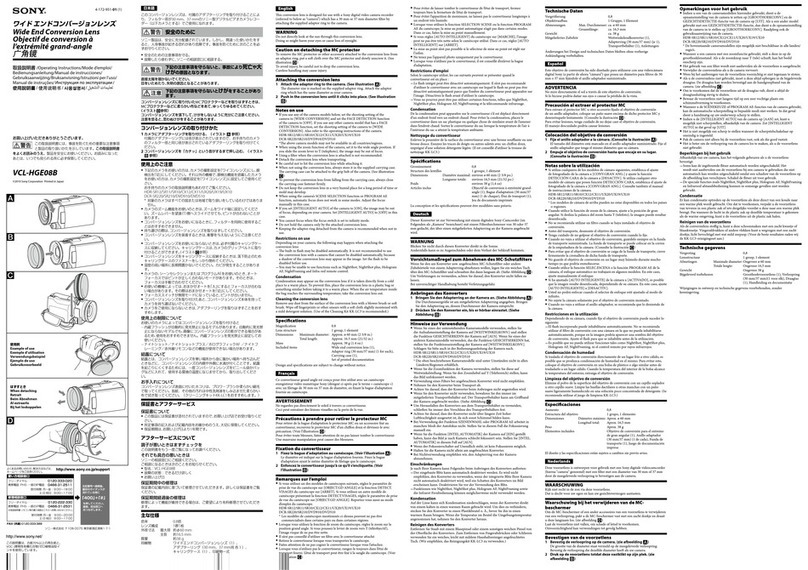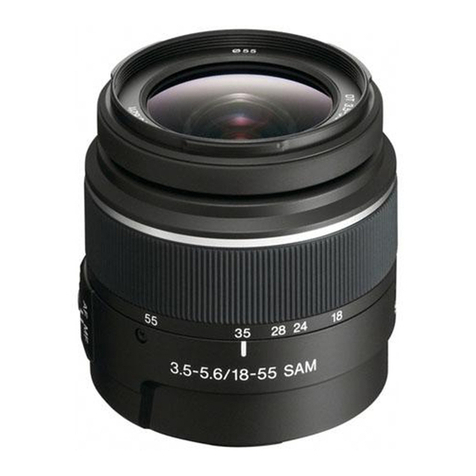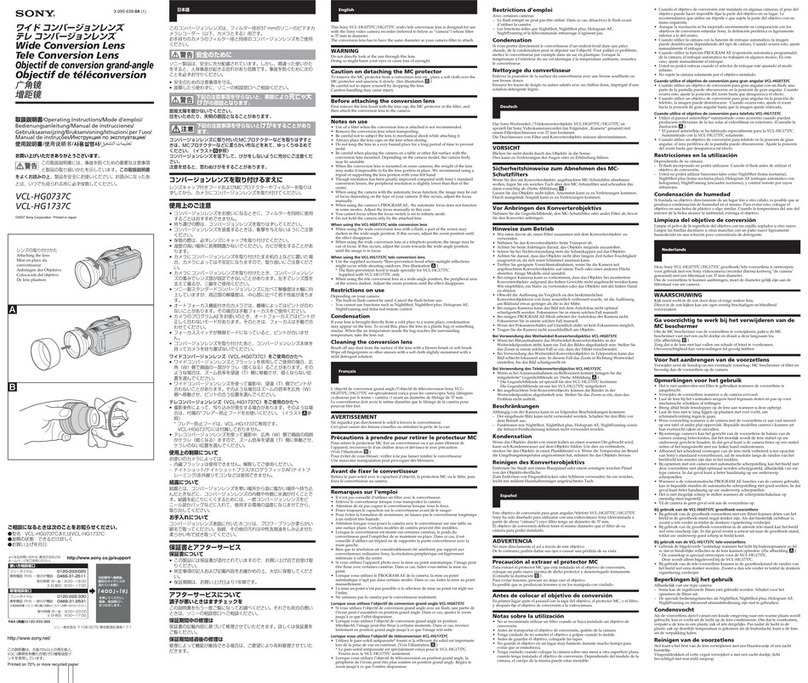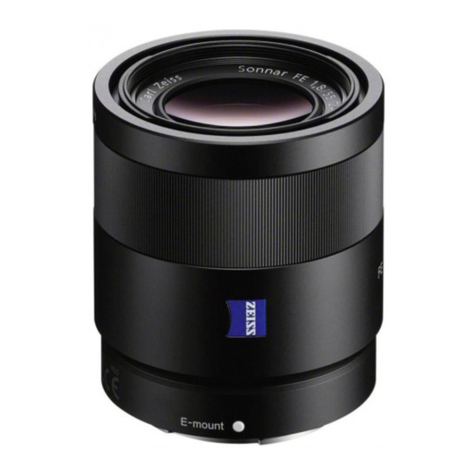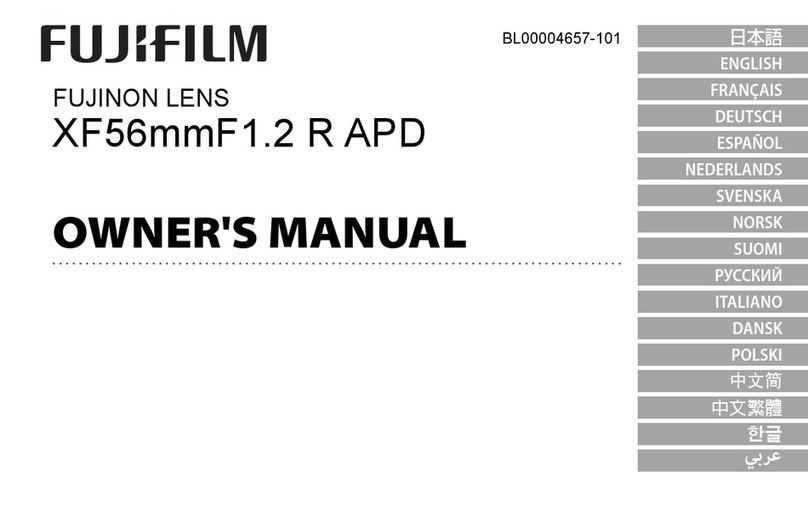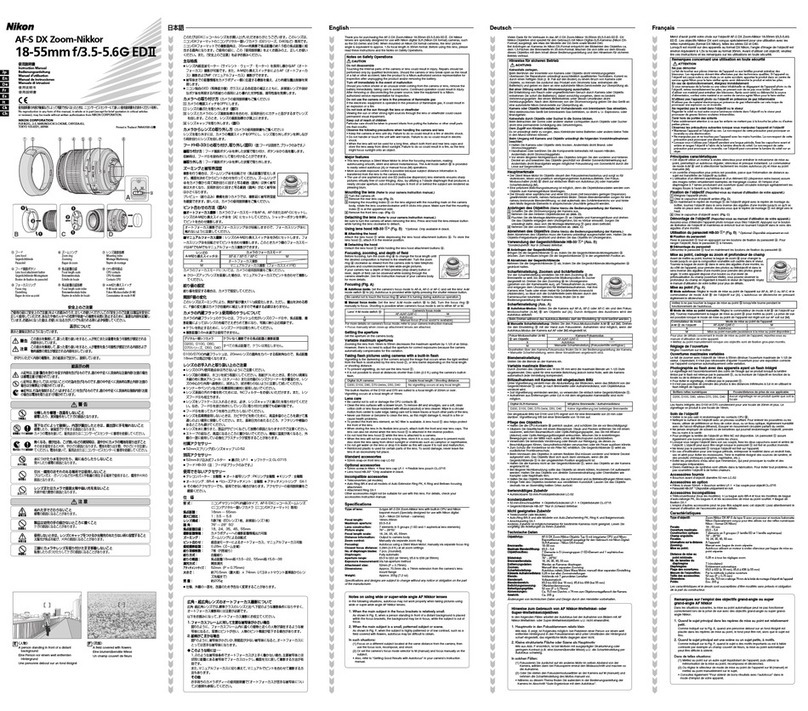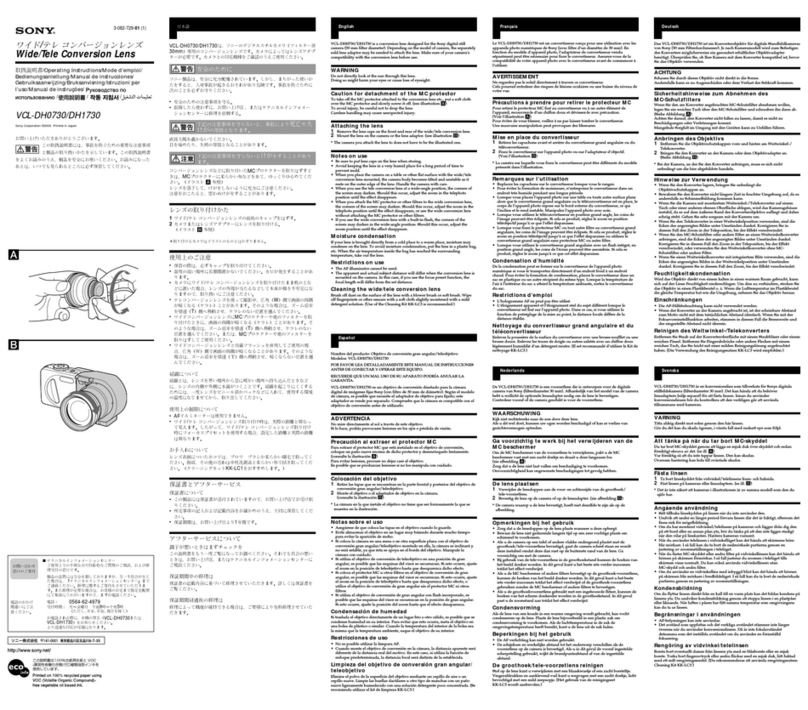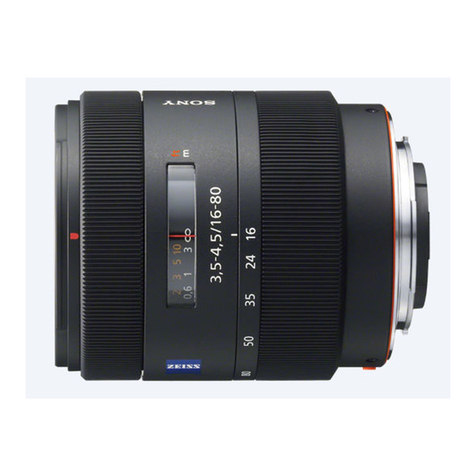
"Precautions before using" contains information you should read before
using the lens, such as precautions
common
to
lenses. How to use
individual lenses
is
described in "Operating instructions"
on
aseparate
sheet.
Be
sure to read both documents before using
the
lens.
To
reduce fire
or
shock hazard,
do
not expose the unit to rain
or
moisture.
Do not directly look at the
sun
through this lens.
Doing
so
might harm your eyes
or
cause loss
of
eyesight.
Keep the lens
out
of
reach
of
small children.
There
is
danger
of
accident
or
injury.
For
the
customers
in
the
U.S.A.
This device complies with Part
15
of
the FCC Rules. Operation is subject to
the following two conditions:
(1) This device may not cause harmful interference, and (2) this device must
accept any interference received, including interference that may cause
undesired operation.
CAUTION
You are cautioned that any changes
or
modifications not expressly approved
in this manual could void your authority to operate this equipment.
NOTE:
This equipment has been tested
and
found to comply with the limits for a
Class Bdigital device, pursuant
to
Part
15
of
the
FCC Rules. These limits
are designed to provide reasonable protection against harmful interference
in aresidential installation. This equipment generates, uses,
and
can radiate
radio frequency energy and, ifnot installed and used in accordance with the
instructions, may cause harmful interference to radio communications.
However, there
is
no
guarantee that interference will not occur in aparticular
installation.
If
this equipment does cause harmful interference to radio
or
television reception, which can be determined
by
turning
the equipment off
and
on, the user is encouraged to try to correct the interference by
one
or
more
of
the following measures:
-Reorient or relocate the receiving antenna.
-Increase the separation between the equipment and receiver.
-Connect the equipment into an outlet on acircuit different from that to which
the receiver
is
connected.
-Consult the dealer or
an
experienced radio/TV technician for help.
For
the
customers
in
Canada
This Class Bdigital apparatus complies with Canadian ICES-003.
For
the
customers
in
Europe
)t
Disposal
of
Old
Electrical &Electronic
Equipment
(Applicable in
the
European Union
and
other
European
countries with separate collection systems)
This symbol on the product
or
on
its packaging indicates that
this
product
shall not be treated as household waste. Instead
_it shall be
handed
over to the applicable collection point
for the recycling
of
electrical and electronic equipment.
By
ensuring this
product
is
disposed
of
correctly, you
will
help
prevent potential negative consequences for the environment and
human
health, which could otherwise be caused by inappropriate waste handling
of
this product. The recycling
of
materials
will
help to conserve natural
resources. For more detailed information about recycling
of
this product,
please contact your local Civic Office,
your
household waste disposal service
or
the
shop
where you purchased the product.
Notice
for
the
customers
in
the
countries
applying
EU
Directives
The manufacturer
of
this
product
is Sony Corporation, 1-7-1 Konan
Minato·
ku Tokyo, 108-0075 Japan. The Authorized Representative for EMC and
product safety
is
Sony Deutschland GmbH, Hedelfinger Strasse 61, 70327
Stuttgart, Germany. For any service
or
guarantee matters please refer
to
the
addresses given in separate service
or
guarantee documents.
Notes
on
use
•
Do
not
leave
the lens exposed to the sun or abright light source. Internal
malfunction
of
the camera body and lens,
or
afire may result due to the effect
of
light
fOCUSing.
Ifcircumstances necessitate
leaVing
the lens
in
sunlight,
be
sure
to
attach the lens caps.
•
Be
careful not to subject the lens/teleconverter
to
mechanical shock
while
attaching
it.
•
Always
place the lens caps on the lens/te1econverter when storing.
•
Do
not
keep
the lens/teleconverter
in
a
very
humid place for along period
of
time to prevent mold.
•
Do
not touch the lens contacts. Ifdirt, etc., gets on the lens contacts,
it
may
interfere or prevent the sending and receiving
of
signals between the lens and the
camera, resulting
in
operational malfunction.
Condensation
If your lens is brought directly from acold place
to
awarm place,
condensation may appear
on
the lens. To avoid this, place the lens in aplastic
bag
or
something similar.
When
the air temperature inside the bag reaches
the surrounding temperature, take the lens out.
Cleaning
the
lens
•
Do
not touch the surface ofthe lens directly.
•If the lens gets dirty, brush offdust
with
alens blower and
wipe
with asoft. clean
cloth (Cleaning Cloth
KK-CA
(optional)
is
recommended).
•
Do
not
use
any organic solvent, such
as
thinner or benzine, to clean the lens or
the camera cone.

